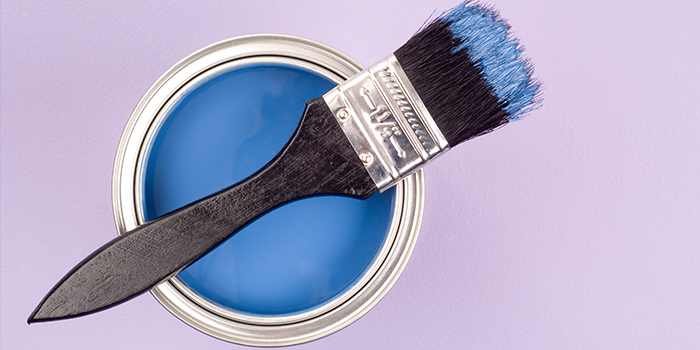Painting is an easy way to update a room, but more often then not, afterwards you end up with half of an unused can. Since leftover paint can be hazardous, as it contains materials that can leak into the ground, cause physical injury to sanitation workers, or contaminate septic tanks, you have to be careful when throwing it away. Here’s what you need to know, and to think about, before disposing of paint.
If you want to throw it out, you’ll want to dry it out first.
Wet latex paint can be hazardous, so dry it up. If there’s only a small amount of paint in the bottom of your can, leaving it out in the sun should do the trick. If there’s a bit more than the sun can handle, try adding kitty litter or newspaper to help soak up the paint and speed the drying process. For larger amounts of paint, purchase a paint hardener, like Homax 3535 3 Pack Waste-Away Paint Hardener ($5, amazon.com) at a home improvement store for just a few dollars. Check your local laws, but in many locations, you can throw away dried-out paint with the rest of your household trash.
If you can’t properly dispose of the paint curbside, let the professionals handle it.
Companies like Lowe’s, Habitat for Humanity, and PaintCare accept leftover paint in order to recycle it. You can also search for a hazardous waste drop-off facility in your area at Earth911.com.
If you feel bad just tossing it, try to donate it …
If you know you won’t use the paint for your walls again, try to recycle it or use it up. Ask a friend if they need some paint or use the leftovers to dress up an old stool or bookshelf. Call your local elementary school to see if they have any big art projects coming up, or search for green building companies that might accept extra paint. Habitat for Humanities ReStores, for example, takes latex paint. Or list it on a site like FreeCycle.org to see if anyone wants to take it off your hands.
.. or save it for later.
If sealed correctly, latex paint can last up to 10 years and oil-based paint up to 15 years. Next time your child turns the living room wall into a canvas or a piece of furniture scrapes the paint, you’ll be glad you saved the leftovers. The EPA recommends keeping paint in its original container (never in food containers) with the original label, adding the date you opened it and room it corresponds to for good measure.
To seal the can, place plastic wrap over the paint lid and hammer it down. Store in a cool, dry place away from sunlight and out of reach of children and pets. Once your paint is hard and lumpy, or if it has a particularly foul smell, it has probably gone bad and should be disposed.
The next time you do a makeover, get a good estimate of how much to buy ahead of time.













